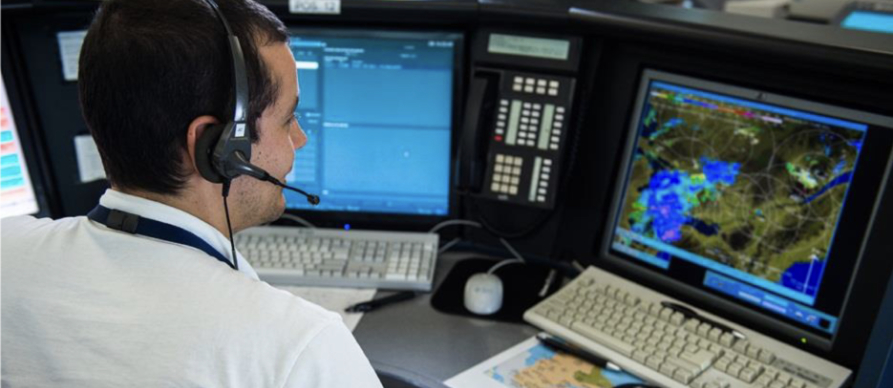
Flight Service Stations (FSS) are facilities operated the Federal Aviation Administration (FAA) in the U.S., that provide a range of services to pilots to support safe and efficient flight operations. FSSs act as a hub for pilots to get critical information and assistance before, during, and after flights, especially for general aviation.
Leidos Flight Service is the contractor that operates many FSS facilities for the FAA, offering automated tools like pilot web portals for retrieving weather information and filing flight plans.
Flight Service Stations are particularly crucial for smaller general aviation operations, offering guidance in areas where full air traffic control services may not be available.
Services Provided by Flight Service Stations:
Preflight Briefing:
- Weather updates (METARs, TAFs, NOTAMs)
- Notices to Airmen (NOTAMs)
- Airport conditions
- Airspace restrictions and other relevant information.
Flight Planning:
- Pilots can file, amend, or cancel flight plans through FSSs.
- Route planning assistance is provided to optimize safety and efficiency based on weather and airspace conditions.
In-Flight Services:
- Pilots can receive updated weather and traffic advisories while in flight.
- Position reports and assistance with VFR (Visual Flight Rules) and IFR (Instrument Flight Rules) navigation.
- Emergency assistance for pilots facing adverse conditions, such as weather issues or navigation difficulties.
Emergency Assistance:
- FSSs provide services like search and rescue coordination, helping locate lost aircraft or coordinating responses to emergency situations.
Hazardous Area Reporting:
- FSSs monitor and relay information about hazardous flight conditions, such as volcanic ash clouds, bird activity, or military operations in the area.
Traffic Advisories:
- They provide pilots with updates on nearby air traffic and any potential conflicts, although they do not control traffic like air traffic control (ATC).
Special Use Airspace Coordination:
- FSSs advise pilots on areas where special airspace restrictions apply, such as military operations areas or temporary flight restrictions (TFRs).
Methods of Communication with FSS:
- Radio (VHF): Pilots often communicate with FSS over designated radio frequencies.
- Telephone: Pilots can contact FSS via phone for briefings or flight plan services.
- Internet Services: Modern FSS systems often offer online access to weather reports, NOTAMs, and flight planning tools.

To contact a Flight Service Station (FSS) while in flight, you can follow these steps:
1. Know the FSS Frequency
- FSS communication frequencies are available on Sectional Charts or in the Chart Supplement (formerly the A/FD – Airport/Facility Directory).
- The most common frequency is 122.2 MHz for general communications, but each FSS has specific frequencies depending on your location.
- The most common frequencies are 122.2, 122.4, or 122.6.
- Look for Remote Communications Outlets (RCOs) in your vicinity on the sectional chart, which will show the frequency and corresponding FSS station.
2. Select the Frequency on Your Radio
- Dial in the appropriate FSS frequency for your location on your aircraft’s communication radio.
- If you don’t know a specific frequency for your area, try 122.2 MHz or use a nearby VOR frequency that has an associated FSS.
3. Initiate Contact
- Use standard radio communication procedure:
- “Flight Service” is the identifier for FSS.
- Example call:
"Bridgeport Radio, Cessna 12345 on 122.2, over."
- Wait for the FSS operator to respond.
4. Provide Your Request
- Once contact is established, you can request various services such as:
- Weather updates (PIREPs, METAR, TAF)
- NOTAMs
- Flight Plan opening / closing
- In-flight position reports
- Flight following (if applicable)
5. Use Your Aircraft’s Transceiver
- If you are not able to reach FSS on the primary frequency, try using a VOR station nearby if it has FSS capabilities.
6. Alternative Methods
- If you can’t get through on the radio, you can use a satellite phone (if equipped) to contact an FSS, especially over remote areas.
- Data Link (via ADS-B or other systems) is another method to contact FSS in flight in more modern cockpits.
By following these steps, you’ll be able to contact the nearest Flight Service Station while in flight for any assistance or information you need.
Note: In the event of an emergency you should contact and use 121.5 (VHF) these are the “emergency” or “guard” frequencies. They are monitored by ATC facilities across the country. In addition, all pilots are required by FDC NOTAM 4/4386 (PilotWeb, PDF) to maintain a “listening watch” on these frequencies, if capable.
You should use Guard to establish communications in the absence of any other clearly available communications channel, for example if you are a VFR pilot not receiving ATC services and you have an emergency, or if the ATC frequency you had been using becomes blocked by a stuck microphone.